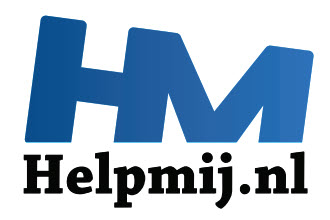Op mijn oude computer(windowsXP) staan e-mailadressen in Outlook express die ik naar mijn nieuwe laptop(Vista) wil over brengen. Ik heb al veel zitten snuffelen op deze site, maar kom er toch niet uit. De aanwijzigingen die in het pdf-bestand over back-up maken van outlook express staan heb ik op gevolgd. Nu staan de bestanden op een extrene harde schijf. Maar importeren in Outlook lukt niet. Kan ik misschien beter Outlook express downloaden of is er nog een andere optie?
Installeer de app
Hoe de app op iOS te installeren
Bekijk de onderstaande video om te zien hoe je onze site als een web app op je startscherm installeert.
Opmerking: Deze functie is mogelijk niet beschikbaar in sommige browsers.
Je gebruikt een verouderde webbrowser. Het kan mogelijk deze of andere websites niet correct weergeven.
Het is raadzaam om je webbrowser te upgraden of een browser zoals Microsoft Edge of Google Chrome te gebruiken.
Het is raadzaam om je webbrowser te upgraden of een browser zoals Microsoft Edge of Google Chrome te gebruiken.
Overzetten gegevens van Outlook Express naar Outlook
- Onderwerp starter Reth
- Startdatum
- Status
- Niet open voor verdere reacties.
Importeren in Windows Mail (eigenlijk: in de Windows Contacts) van de door Outlook Express gebruikte .WAB bestanden:
Uit deze link
Een andere plaats (nog veel uitgebreider, maar misschien niet nodig voor een doorgewinterde computeraar): hier, welke de volledige overzetting beschrijft, inclusief contactpersonen, mail etc.
Succes,
Tijs.
Uit deze link
To import contacts created in another program
1. Open Windows Contacts by clicking the Start button Picture of the Start button, clicking All Programs, and then clicking Windows Contacts.
2. On the toolbar, click Import, and then click one of the following formats to import contacts from:
• CSV (Comma Separated Values). This is a generic file format used for exporting and importing information to and from databases or spreadsheets. If you are unable to import an address book file directly into Windows Contacts, try converting it first to a .csv file and then importing that file.
• LDIF (LDAP server). This format is used to import directory information from LDAP-based directory servers.
• vCard (VCF file). This is the most widely used contacts format.
• Windows Address Book file (Outlook Express contacts). This format (.wab file) is used by most earlier versions of Windows, including Windows XP.
3. Click Import, locate the contacts file you want to import, and then click Open. The new contacts should appear in your Contacts folder.
If you can't locate the contacts file you want to import, check the information that came with the program that created the contacts or visit the manufacturer's website. You might need to export contacts from the program before you can import them into Windows Contacts.
4. When a message appears telling you that the contacts import process has completed, click OK, and then click Close.
Notes
* Windows will automatically convert all your contacts in the Windows Address Book to the new Windows Contacts format when you upgrade a computer from Windows XP to this version of Windows.
* The Windows Address Book contacts file on your Windows XP computer is usually located at
C:\Documents and Settings\Your User Name\Application Data\Microsoft\Address Book.
The Address Book file has a .wab extension and is usually named after your user name. If you don't see this file or folder, you might need to show hidden files (see Show hidden files). After you finish importing a Windows Address Book file, each contact will appear as an individual .contact file.
Een andere plaats (nog veel uitgebreider, maar misschien niet nodig voor een doorgewinterde computeraar): hier, welke de volledige overzetting beschrijft, inclusief contactpersonen, mail etc.
Succes,
Tijs.
Laatst bewerkt:
adreboek
Als ik bij start het rolscherm af ga kom ik o.a. bij Windows contactpersonen. Daar staan alle emailadressen nu in. Maar bij Microsoft Outlook staat er niets in het adresboek. Als ik dan een nieuw bericht aanmaak en op "aan" druk dan kan ik dus geen email adres invoegen. Hopelijk ben ik zo duidelijk. Anders probeer ik wel een schermafdruk te maken.
Als ik bij start het rolscherm af ga kom ik o.a. bij Windows contactpersonen. Daar staan alle emailadressen nu in. Maar bij Microsoft Outlook staat er niets in het adresboek. Als ik dan een nieuw bericht aanmaak en op "aan" druk dan kan ik dus geen email adres invoegen. Hopelijk ben ik zo duidelijk. Anders probeer ik wel een schermafdruk te maken.
Oh.... ik zie nu dat het gaat om Outlook, niet om Windows Mail.
Je snapt nu waarom ik telkens over Windows Mail heb gesproken...
Kijk even hier, vanaf "Import Internet Mail and Addresses". Die zouden ze dan vanaf Windows Mail/Windows Contacts moeten importeren in je Outlook adresboek.
Succes,
Tijs.
Je snapt nu waarom ik telkens over Windows Mail heb gesproken...
Kijk even hier, vanaf "Import Internet Mail and Addresses". Die zouden ze dan vanaf Windows Mail/Windows Contacts moeten importeren in je Outlook adresboek.
Succes,
Tijs.
Kijk even of in de map Contactpersonen van Outlook wél die geïmporteerde zaken staan.
Overigens ga ik ervan uit dat je niet vergeten hebt om dat vinkje te zetten bij de Outlook import-actie om adresboek te importeren (zie die instructie)...
Tijs.
Overigens ga ik ervan uit dat je niet vergeten hebt om dat vinkje te zetten bij de Outlook import-actie om adresboek te importeren (zie die instructie)...
Tijs.
- Status
- Niet open voor verdere reacties.
